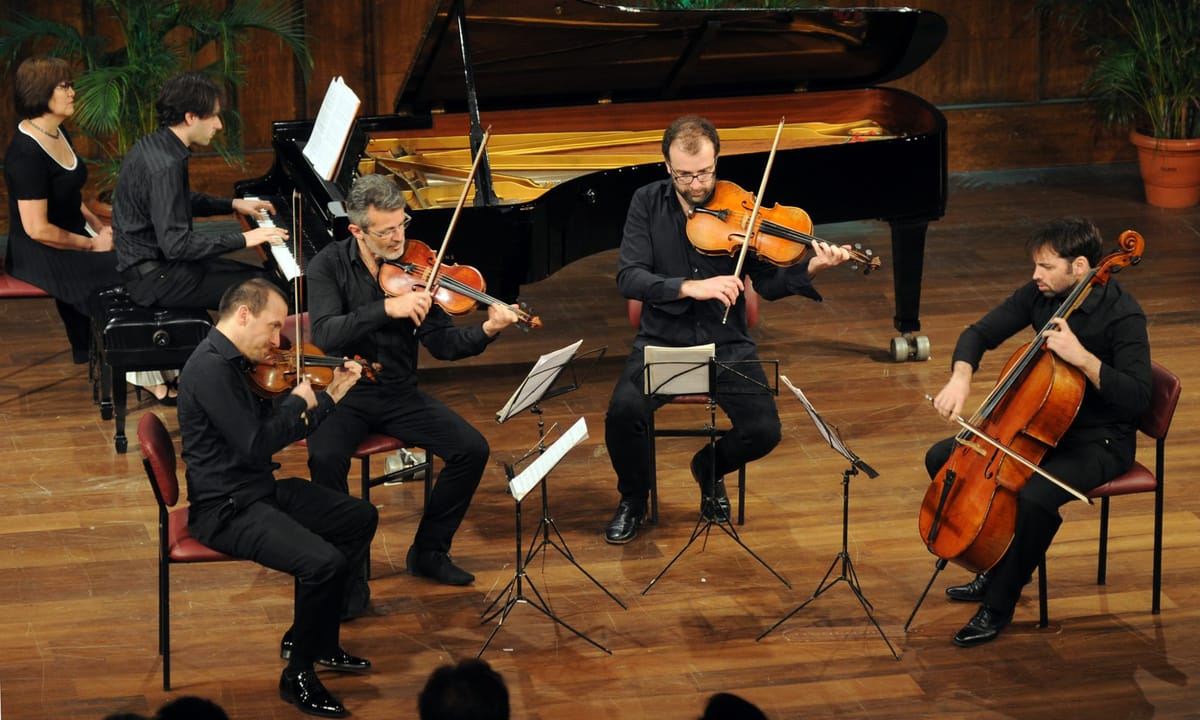ARTIE’S FESTIVAL ENTERS ITS SECOND DECADE

The Artie’s were back with a bang last month, arriving in India for four recitals in Mumbai and Pune as part of their 21st season of the bi-annual Festival. Most of the musicians have been here before including the outstanding Olivier Patey – principal clarinettist of the Royal Concertgebouw Orchestra. The programme on the first day in Mumbai included warhorses by Brahms and Dvořák as well as the less familiar music by Jewish composer Ernst Bloch. Emmanuel Christien was the outstanding pianist who partnered with Hugues Borsarello, violinist of the Volta Quartet in Bloch’s Baal Shem. The second movement of this high romantic music was the familiar Nigun well known to violinists and audiences as a standalone showpiece. The first part acts as a sort of introduction called Vidui (Contrition). This marks the Jewish New Year of Yom Kippur (Day of Atonement). This piece was composed in 1923 but has a late romantic flavour. This was followed by Brahms’s famous clarinet quintet in B minor op 115 composed at the tail end of his career in 1891 for Richard Muehlfeld for whom he had composed a clarinet trio op 114 and two clarinet sonatas op 120. This is a plaintive and autumnal work which was played beautifully by Olivier Patey, members of the Volta Quartet and Julien Decoin as cellist. After the interval Dvořák’s second piano quintet op 81 was played with great polish and vigour not to mention beauty of tone. The great melody for solo cello which opens the first movement was controlled and reticent rather than over-blown judged accurately in keeping with good chamber music. The music was heady romantic stuff with no element noticeable of Dvořák’s frequent melodic folk and dance idioms.

The second day focused on two very contrasting pieces, Schoenberg’s headily romantic but clearly 20th century peon to the night Verklärte Nacht (Transfigured Night). This piece inspired by a poem by Richard Dehmel is a transitional piece both in the life of Schoenberg and Western music moving from the 19th to the 20th century. Written in 1899 it reflects a young composer never too dissociated from the past and much like Brahms seeing himself a part of the tradition which also meant to make efforts to move it forward. There is nothing of the atonal starkly expressionistic world of late Schoenberg. In this arrangement the Volta Quartet was joined by Julien Decoin and Mikhail Bulgakov violist of the Symphony Orchestra of India.

The final piece of the second evening was the crowning glory of the clarinet’s chamber repertoire. Written in 1789 this late work by Mozart was written for the Virtuoso clarinettist Anton Stadler for whom Mozart also wrote his valedictory clarinet concerto. This work in four movements could not have received a more impeccable performance. The playing embodied Viennese “gemuetlichkeit” with the light and shade of true Mozartian style. The clarinettist again was Olivier Patey playing a basset clarinet made specially for him in Bamberg, Germany. This instrument has a more liquid sound than the more reedy modern counterpart. The basset clarinet was used in Mozart’s day but modern clarinettist prefer to use a B flat or A clarinet. The basset clarinet is made of box wood rather than ebony, is longer and has an upturned snout and an extension in the lower range. Patey sitting in the centre blended his liquid tone with the strings impeccably creating the illusion of a breathless string sound. Never have I heard such fine music making in the context of musical blending of apparently disparate sound. Bravo and here’s to the next season!




